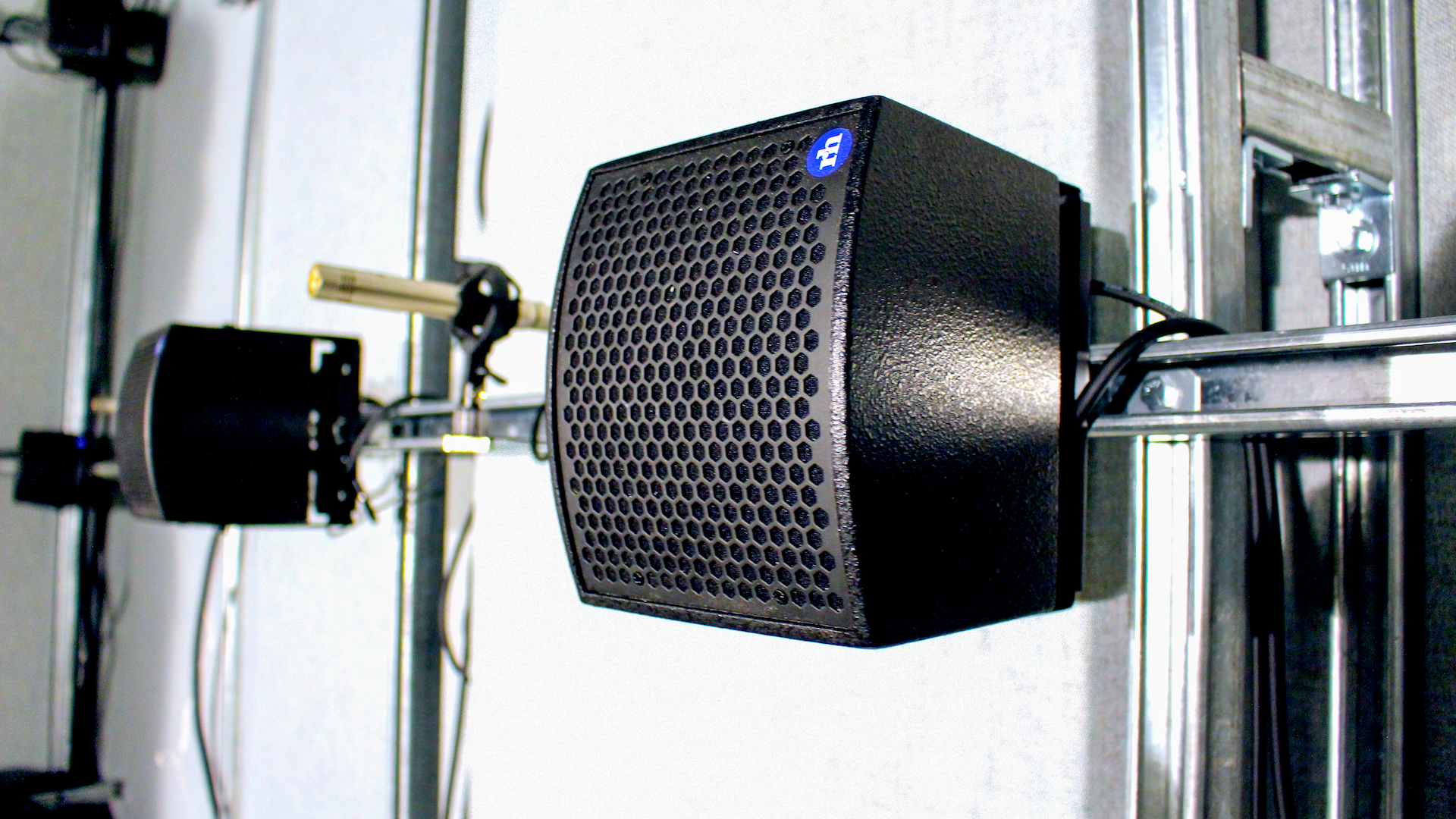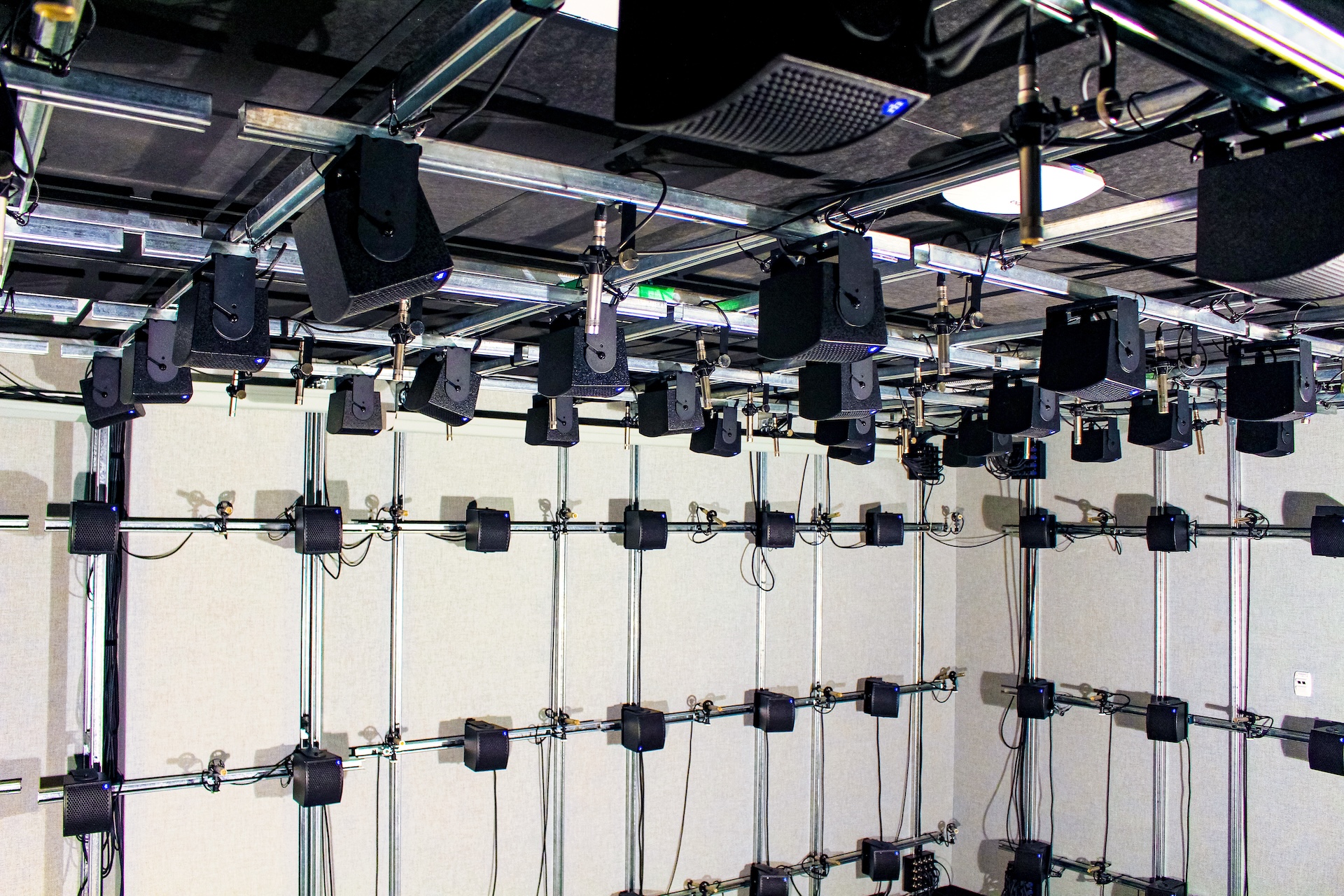128 Renkus-Heinz Loudspeakers Create Immersive Communication at Simon Fraser
TiMax, Advanced Audio, DirectOut, Innosonix Technologies, and Renkus-Heinz power the new research lab.

With the backing of a recent grant, Simon Fraser University established an acoustics lab equipped with 128 Renkus-Heinz C Series loudspeakers to support its innovative research in the field and create immersive communication.
Located across British Columbia’s three largest cities—Burnaby, Surrey, and Vancouver—SFU drives to leverage technology for societal benefit, leading to the creation of a new lab focused on 3D multimedia applications, including surround sound, video, and spatial acoustics, commonly referred to as "immersive communication." Senior professor Rodney Vaughan spearheaded the project and partnered with TiMax, Advanced Audio, DirectOut, Innosonix Technologies, and Renkus-Heinz to bring his vision to life. Renkus-Heinz's Canadian distributor, Contact Distribution also played a pivotal role in the project, supplying all technology involved, aside from the microphones.
"Rodney came to me over 10 years ago with a bold idea for an acoustic lab where we could push the boundaries of sound research," recalled Tim Bartoo, TiMax senior developer. "He talked about creating spaces where, for instance, you could have a bedroom on a noisy street that feels as quiet as the countryside."
[The Minnesota Vikings Took Over London by Immersing Fans in LED]
The lab, now a reality, is centered around two TiMax spatial processors, which were selected for their exceptional spatial functionality and flexibility. This technology is vital for the range of experiments planned in the lab, such as simulating complex sound fields and testing noise-canceling concepts. In addition to the 128 Renkus-Heinz CX41 speakers, 128 Advanced Audio microphones were installed, all integrated via a Dante network to allow for seamless communication between components.
"Fred [Gilpin, an acoustic consultant] handled the precision of the speaker placement," Bartoo explained. "We have about five miles of custom cabling in that room. His attention to detail was critical because every microphone and speaker needed to be precisely located to ensure accurate sound replication."
The Renkus-Heinz CX41 four-inch coaxial two-way loudspeakers were an ideal choice for the lab, given their compact size and superior sonic performance. Featuring extended-range soft-dome tweeters, these speakers deliver smooth, low-distortion sound, capable of reaching frequencies beyond 20 kHz.
A daily selection of features, industry news, and analysis for AV/IT professionals. Sign up below.
[How 33 Epson Projectors Power Immersive Learning for Medical Students]

Renkus-Heinz’s Complex Conic Horn technology also played a pivotal role in ensuring consistent coverage throughout the lab. This design provides constant beam width over a wide frequency range, eliminating typical horn-related issues like polar pattern distortion.
Another area of interest for the lab is enhancing room acoustics, particularly in overly reflective environments. By using advanced modeling and soundfield control, researchers hope to develop systems that analyze a room's acoustics and compensate for excessive reverberation, improving intelligibility and sound quality in challenging spaces.
[Check Out How the Cosm Dome Is Reinventing Watching Sports
The lab has already drawn significant interest from the academic and research communities, with numerous proposed projects on the horizon. "We recently completed our first 128-channel recording," Bartoo shared. "We walked around the room, talking and clapping, and when we played it back, you could pinpoint exactly where the sounds were coming from. When you closed your eyes, you could visualize who was where in the room. It’s pretty neat."
The AVNetwork staff are storytellers focused on the professional audiovisual and technology industry. Their mission is to keep readers up-to-date on the latest AV/IT industry and product news, emerging trends, and inspiring installations.
